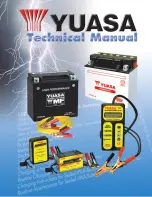
1-17
SEATS AND RESTRAINT SYSTEMS
85Z04-03E
Question: What if a child is wearing a
lap-shoulder belt, but the child is so
small that the shoulder belt is very
close to the child’s face or neck?
Answer:
If the child is sitting in a seat next
to a window, move the child toward the
center of the vehicle. If the child is sitting in
the center rear seat passenger position,
move the child toward the safety belt
buckle. In either case, be sure that the
shoulder belt still is on the child’s shoulder,
so that in a crash the child’s upper body
would have the restraint that belts provide.
If the child is so small that the shoulder belt
is still very close to the child’s face or neck,
you might want to place the child in a seat
that has a lap belt, if your vehicle has one.
Wherever the child sits, the lap portion of
the belt should be worn low and snug on
the hips, just touching the child’s thighs.
This applies belt force to the child’s pelvic
bones in a crash.
Infants and Young Children
Everyone in a vehicle needs protection!
This includes infants and all other children.
Neither the distance traveled nor the age
and size of the traveler changes the need
to use safety restraints. In fact, the law in
every state in the United States and in
every Canadian province says children up
to some age must be restrained while in a
vehicle.
Every time infants and young children ride
in vehicles, they should have the protection
provided by appropriate restraints. Young
children should not use the vehicle’s adult
safety belts alone, unless there is no other
choice. Instead, they need to use a child
restraint.
L3U1038A
WARNING
Never do this.
Here a child is sitting in a seat that
has a lap-shoulder belt, but the
shoulder part is behind the child. If
the child wears the belt in this way, in
a crash the child might slide under
the belt. The belt’s force would then
be applied right on the child’s abdo-
men. That could cause serious or
fatal injuries.
WARNING
People should never hold a baby in
their arms while riding in a vehicle. A
baby doesn’t weigh much – until a
crash occurs. During a crash a baby
will become so heavy it is not possi-
ble to hold it. For example, in a crash
at only 25 mph (40 km/h), a 12-lb. (5.5
kg) baby will suddenly become a 240-
lb. (110 kg) force on a person’s arms.
A baby should be secured in an
appropriate restraint.
L3U1039A
Child Restraints:
Summary of Contents for Automible 2008 Forenza
Page 2: ...Prepared by July 2007 Part No 99011 85Z04 03E Printed in U S A TP222...
Page 11: ...0 4...
Page 75: ...2 27 FEATURES AND CONTROLS MEMO...
Page 200: ...MAINTENANCE SCHEDULE 6 MAINTENANCE SCHEDULE General Information 6 1 Maintenance 6 2...
Page 219: ...7 5 GENERAL INFORMATION MEMO...
Page 225: ...8 6 INDEX Y Your Driving the Road and Your Vehicle 4 1...
















































